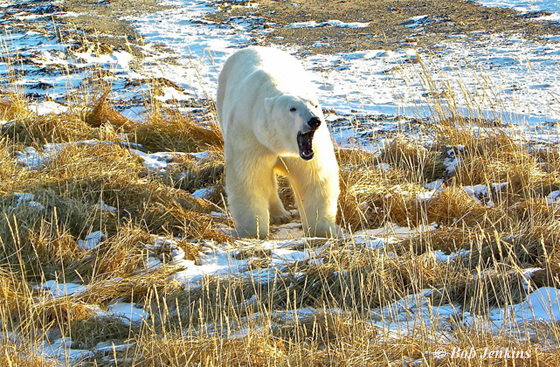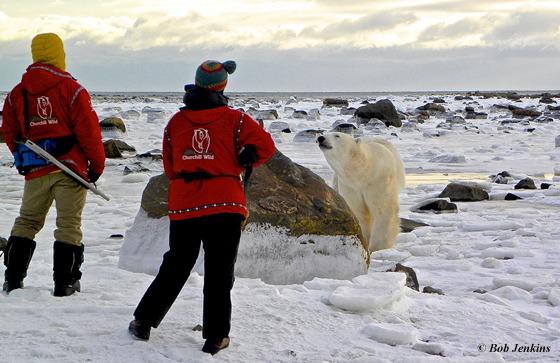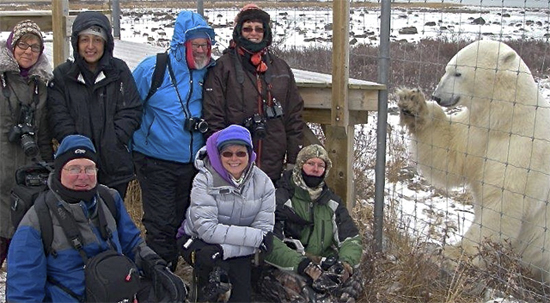Thanks to a rare combination of natural instincts, sights and sounds, we often have “resident” polar bears at Churchill Wild’s polar bear lodges.
And it’s not because we’re feeding the bears.
Churchill Wild operates the only polar bear walking tours on the planet that are based out of remote luxury eco-lodges deep in the heart of polar bear country along the Hudson Bay coast. There are no roads in or out. Polar bears live here. We’re in their house.
You have to fly anywhere from 30-250 km out of Churchill to get to our lodges. Seal River Lodge is 60 km north of Churchill, Dymond Lake EcoLodge is 30 km west of Churchill, and Nanuk Polar Bear Lodge is 250 km south of Churchill. All three lodges are situated in the corridor through which the polar bears travel up and down the Hudson Bay coast. The polar bears you’ll see here are not the same bears you’ll see with the crowds in Churchill. There may however, be a few repeaters in the mix.
Wildlife biologists tell us that many polar bears go back on to the ice in almost the same spot along the coastline each fall, no matter where the ice leaves them in the spring. How and why this occurs is a bit of a mystery, but it’s very clear to us that it happens at our lodges.
For several years we had a group of three polar bears that waited for the ice around Seal River Lodge, and there were 4-6 bears that hung out south of us near the mouth of the Seal River until freeze up.
There are obviously many interesting smells and sights around the lodges, so rather than wander up and down a familiar stretch of coastline for four to five months waiting for ice, some bears choose to remain where the action is.
Over the years we’ve had many polar bears exhibit repeat behavior patterns. Some have been seen three years in row; some every other year; some for a week and then gone for a month and back for another week. It changes constantly.
Last year, a polar bear we affectionately named “Bob” was very comfortable with us and seemed to love the company and attention of our guests, but he could just as easily be gone one day and we might never see him again. We also had a mother and cub around the Lodge on occasion for as much as a week at a time. And of course, there’s “Scarbrow” at Dymond Lake Eco-Lodge. He’s been coming around for years.
Some bears just pass by and others visit for a few days. Every bear is different. Many don’t pay any attention to us.
We never feed the polar bears and never will. It disrupts the natural process of the bear’s life, and it is not a healthy way to interact with any wild animal. If we had food out, ALL the bears that pass by the Lodge would stay, the place would be crawling with bears, and we would never be able to leave the compound. The bears would associate us with food and become much too unpredictable and dangerous.
We would end up with dozens of bears lurking near the Lodge. Not a healthy situation. Might be fun to see, but definitely not healthy! No hungry polar bear will pass up a free and easy food source.
Polar bears are extremely intelligent animals and exhibit a natural curiosity in their surroundings. They are large, powerful carnivores that must always be treated with the utmost caution and respect. Still, it is a lot of fun to have an accommodating bear like “Bob” to work with once in a while.
See you this summer, Bob.












